August 2018 July 2018 >>
Blog of Jack and Jude
explorers, authors, photographers & videographers
Sherbro sails into Ballina
 Two fascinating fellows sailed into Ballina last week. Friends of friends from South Australia, they phoned from Iluka asking if we were in and we gave them advice on crossing Ballina’s notorious river bar. Geez they were lucky. A two metre swell had been predicated with spring tides making the run out rather swift. But when they arrived, following our advice, they called Marine Rescue who told them that the river bar was passable with caution.
Two fascinating fellows sailed into Ballina last week. Friends of friends from South Australia, they phoned from Iluka asking if we were in and we gave them advice on crossing Ballina’s notorious river bar. Geez they were lucky. A two metre swell had been predicated with spring tides making the run out rather swift. But when they arrived, following our advice, they called Marine Rescue who told them that the river bar was passable with caution.
On board Sherbro, a 10.5 metre Jarkan named after a small island off the Southern Province of Sierra Leone best known for its slave trading past, the pair arrived with a rather pleasant laid back view of cruising, and the following morning we quickly discovered that they also have an interesting background as well. Tied alongside the floating pontoon centre of Ballina town, we met John and Steve from Maralinga, a remote Aboriginal community in South Australia which was used as a British nuclear test site between 1956 and 1963. Steve is an aboriginal originally from Ceduna, and John hangs out in Elliston on South Australia’s southwest coast facing the Great Australian Bight. He’s a close friend of Timmy and Anna, our mates you would have seen in our film, South Australia Holiday, featuring the Joseph Banks Conservation Park near Port Lincoln. Timmy and Anna’s family has expanded since those halcyon days with the addition of two adorable children, Zephyr and Chillie. Doesn’t life afloat form strong bonds with amazing humanity?

SHERBRO visiting the Richmond River
That brings to mind how helping each other survive in the wild world of Nature has us looking beyond our differences to build enduring respect – this is something Jack and Jude have always cherished and thought could benefit all mankind as well as Earth. We believe each of us should honour the fact that we are inhabitants of a glorious planet that is unique for as far as can be perceived, and that should bond us all to rise above irritants and help control greed and lust for power. Pulling together for the betterment of mother earth we could heal our differences while at the same time reduce the burden on Earth.
Okay, off my soap box, and back to the story of John and Steve, who a couple of years ago flew to Japan to unveil a huge bronze sculpture they had made here in Australia. At a ceremony at the Nagasaki Peace Park on 18 April 2016, a sculpture symbolising Australia’s potent desire for peace and harmony was unveiled by Japanese nuclear survivors.
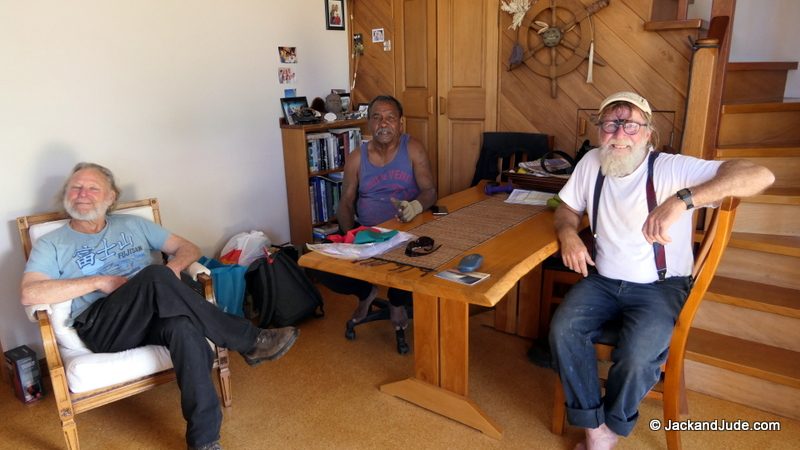
Jack with Steve and John
Luncheon on the Richmond
Look what’s just landed on our front lawn
Well, we took the plunge last Sunday and bought a Careel 18′ Type 1, a project boat, from a most helpful and unforgettable man up in Brisbane. First task, getting her home. No mean feat considering we live 200 km away and the boat and trailer hadn’t moved in 7 years!;
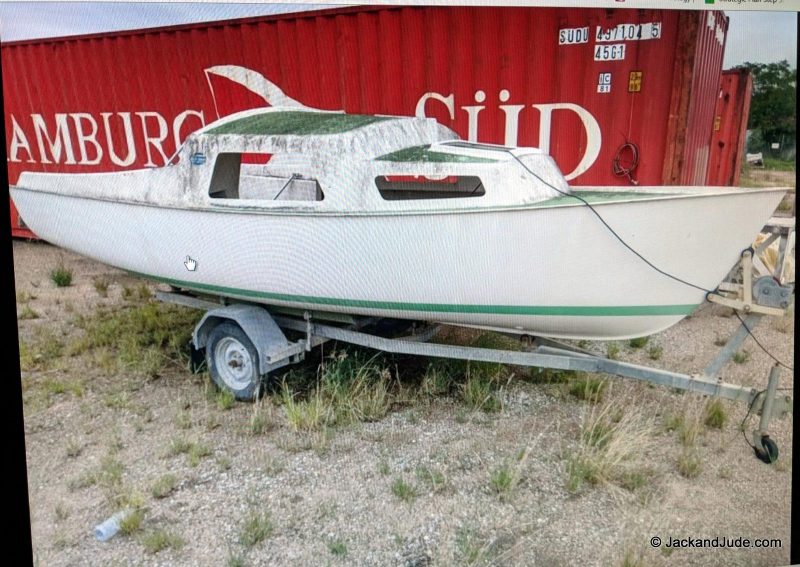
Waiting patently for a new home
Fortunately, even though we’re in our 70s, we’re pretty adept at achieving things and had the foresight and courage to hire a car trailer and loaded her up. Scary that, but it went well. Then easy peasy, down the M1 at a even 100 kph, the ride as smooth as a baby’s bottom.
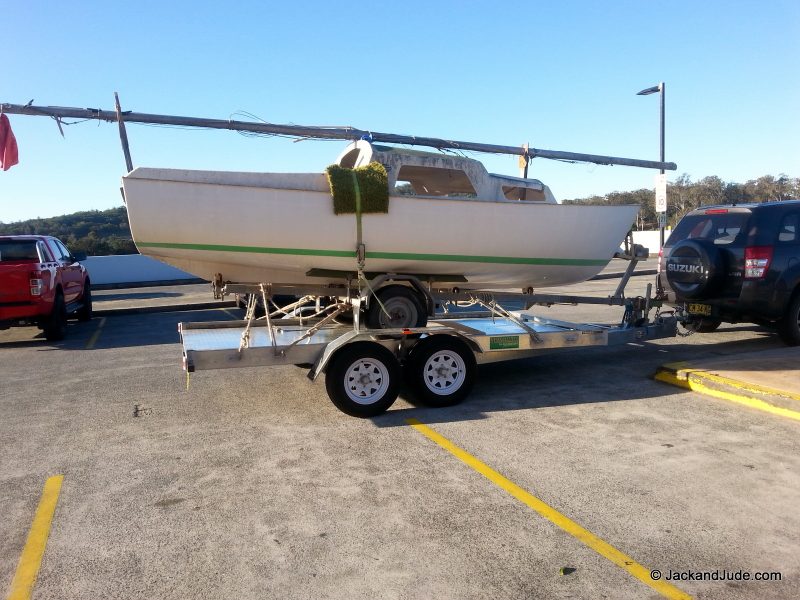
Up, up, and away down the highway

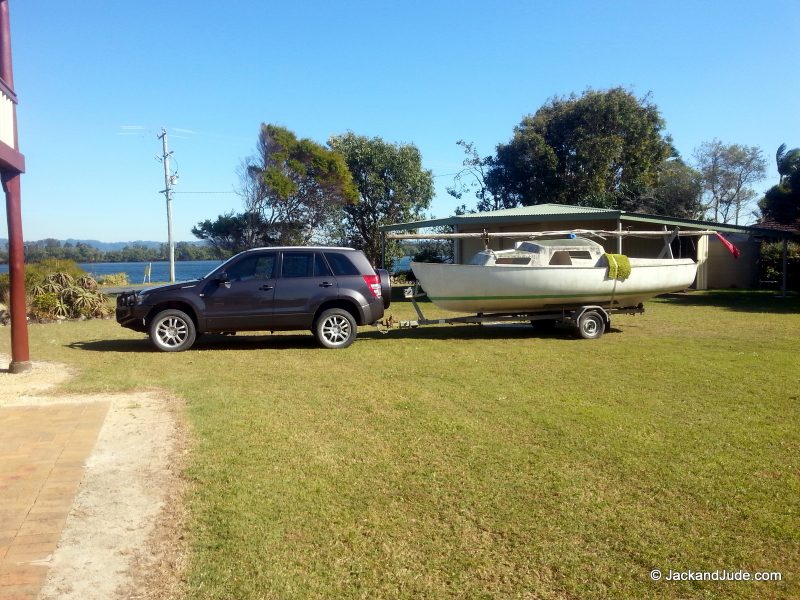
Mini-B has landed
These very popular craft were designed by John Duncanson and there were over 400 built in Sydney by David Rose Yachts with some built in Brisbane under licence. They’ve a lovely shape with a nice entry and flat bottom, made with hand laid up fibreglass. A simple rig and swing keel make them easy to rig and sail – a perfect craft to teach our grand kids how to sail.
Aah, but first comes the restoration!

Mini B’s new home

Careel 18 Type 1 Sail 201
Click here for more history of this amazing little beauty
I love not man the less, but Nature more – Lord Byron
We all need a little love

Don’t spoil a good story by not skipping a meal
Japan set to propose resuming commercial whaling at a meeting of the International Whaling Commission
[Read More in EARTH NOW]
Midwinter Hints and Tips
 Hello from Northern NSW, where the balmy days feel more like summer than mid-winter, and are perfect to tackle a bit of boat maintenance. So, we thought we’d put up a few helpful hints for maintaining your vessel and gear.
Hello from Northern NSW, where the balmy days feel more like summer than mid-winter, and are perfect to tackle a bit of boat maintenance. So, we thought we’d put up a few helpful hints for maintaining your vessel and gear.
For the many who have asked how Jude is recovering from her fall and broken wrist bones – she’s fine, her wrist is nearly back to 100% but her ankle which was over extended and suffered severe bruising is still causing her pain. She’s now out of the Cam Boot and to get full use of her ankle again she’s right into a whole range of exercises set out by her physio to relieve the swelling. Even better news is that we’re planning our next offtrack excursion – albeit this time we’ll be carrying a wee bit less weight. With such wonderful winter weather, a week lost in the never-never enjoying Nature’s wealth is calling like a siren.
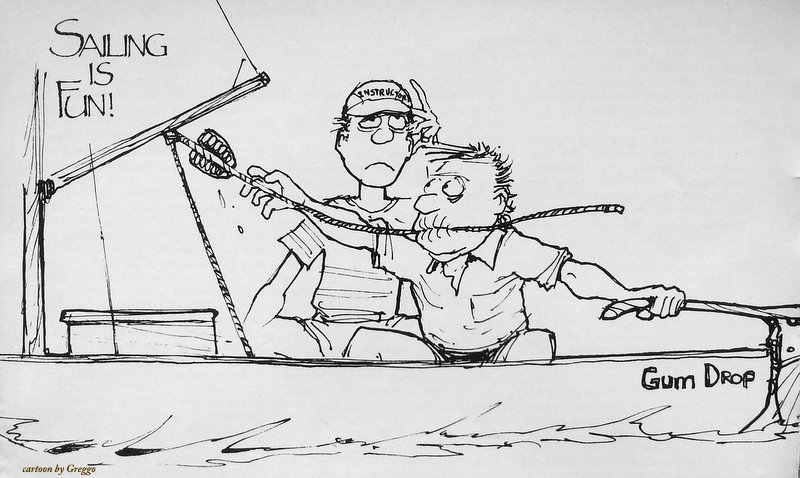
Tips to Save Your Costly Running Rigging
By guarding against the five deadly enemies of all line: sunlight, dirt, salt, chafe, and shock, you can extend the life of any piece of marine rope and save replacement costs by doing just five simple things on a regular basis.
Wash and Dry Before You Stow!
Did you realize that nylon line–like those used for docking lines or anchor lines–can lose up to 15% of their strength when wet? Or that wet line, stowed in a dark, dank locker presents a prime breeding ground for mold and mildew?
Wash your anchor rode, cockpit sheets, and halyards with fresh water. Get into your anchor locker with a hose and spray it down. Do the same with your others lines or soak your ropes in a 20 litre pail of fresh. This will loosen up line-killing dirt and salt crystals. Then flake the line in alternate loops over a rail or your lifelines to dry them before coiling and stowing after they have dried completely. This can add years of life to any line and it will stay supple for sailing or marine knots. We always wash our lines when wintering Banyandah.
Keep Lines Under Tension
Halyards and Genoa or jib sheets must stay under constant tension to prevent fibre and strand breakdown. Lines that are too loose will shock and slack, which can weaken the line. Take care not to make lines too taut.
Some lines–docking and anchor lines–must have slack in order to perform their best. On the other hand, your super expensive sail halyards and sheets should be under tension. When sailing, re-tension your sheets and halyards once in a while to keep wear under control.
Make Leads Straight and True
Straight leads give you the best fair leads. You might have heard the sailing term “fair lead”, which means the direction a line travels form one point to another. The straighter you keep the line, the less wear and tear on the fibers.
Keep this in mind whenever you need to thread a sheet through a block, or lead a line from the mast back to your cockpit, or set up your Genoa furling line between bow and cockpit.
Keep acute bends that change the lead of the line by 60 to 90 degrees to an absolute minimum. The more bend you put into a line, the more stress this places on the apex of the bend. Use straighter fair leads to pump life-blood into your lines and save on repair and replacement costs.
End for End Lines Once a Season
One of the huge jobs on olden day square-rigged ships was to end-for-end line once a year. This monumental task involved thousands upon thousands of metres of rigging. But it added years of life, and well it did because those big ships were at sea for years at a time, and the cost of line back then was astronomical.
Today, the cruising or racing skipper can use this same technique to add years of life to docking or anchor lines, halyards and sheets. And it’s a lot simpler because you aren’t dealing with so much cordage.
If using rope halyards, end for end the line will shift the wear point, just as it does for rope sheets. If anchoring on rope, just make the bitter end of the line the working end. Do this once a season. This end-for-end technique has been proven to extend the service life of anchor line, sheets and halyards by a whopping 50%!
Whip, Dip, or Tape Bitter Ends
The ends of your lines can fray and unwind to look like the head of a golliwog. Prevent this with whipping, where you wrap sail twine around the end. An easier temporary method uses 50 mm duct-tape. Wrap the tape tight, two to three times around the end, then use a sharp knife to cut through the line at the centre of the tape.
Or, make your own end-whipping dip. Dip at least 10mm of the bitter end into super glue. Any of these techniques are guaranteed to stop fraying and save you lots of money.
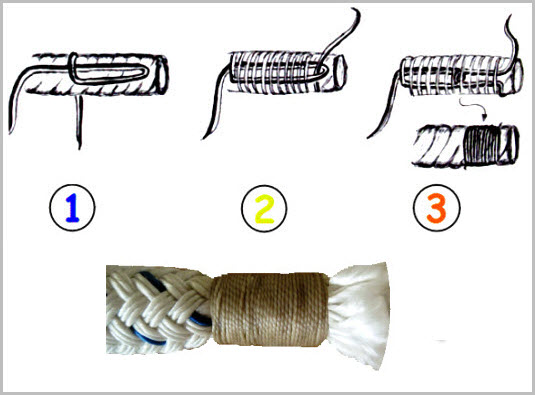
Melt ends of synthetic cordage first
See more knots HERE
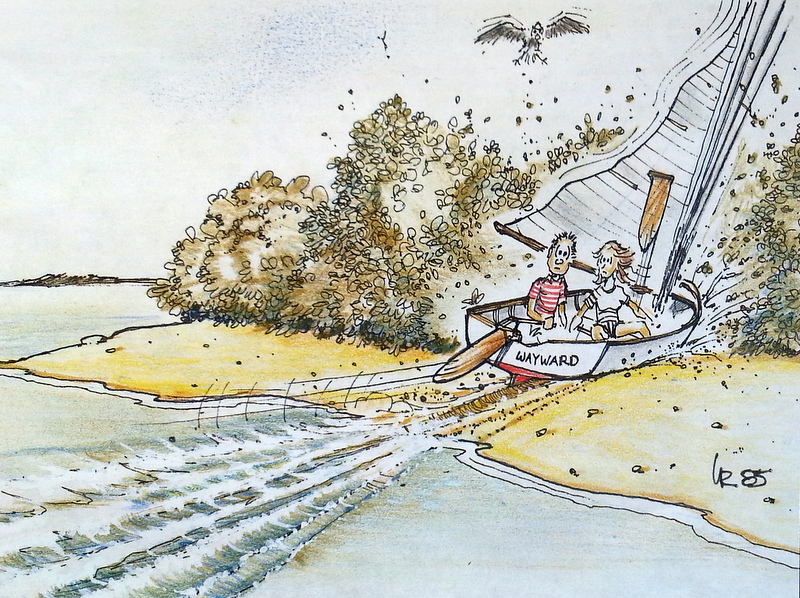
Furlers – Friend or Foe?
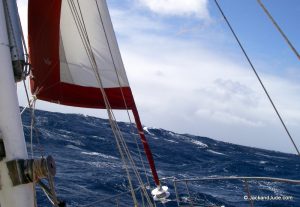 After spending my first twenty years before the mast being bashed about by sailcloth and hardware while trying to stay aboard when changing sails, we invested in furling gear and a furling headsail. What bliss! No matter how hard the wind blew, I remained safe in the cockpit while reducing sail. Yippee! Never again did I have the arduous task of bagging stiff cloth or the problem of storing so many sails. But there are a few serious shortcomings with furlers and with winter’s stronger winds upon us, let’s review how best to manage them.
After spending my first twenty years before the mast being bashed about by sailcloth and hardware while trying to stay aboard when changing sails, we invested in furling gear and a furling headsail. What bliss! No matter how hard the wind blew, I remained safe in the cockpit while reducing sail. Yippee! Never again did I have the arduous task of bagging stiff cloth or the problem of storing so many sails. But there are a few serious shortcomings with furlers and with winter’s stronger winds upon us, let’s review how best to manage them.
Furling sails are bulky. They create a lot of windage at the front of the ship that can make manoeuvring in confined spaces difficult, and when going to weather, their massive leading edge reduces performance. But it is while at anchor or hanging off a mooring that this extra windage can catch us unawares and cause damage or even loss of the vessel. The windage will cause your ship’s head to be blown off the wind with the result that you may find the ship being blown one side to the other and this creates greater strain on your ground tackle.
Granddaddy of all problems
But the granddaddy of all problems comes when the sail has been loosely furled. In stormy conditions that ol’ devil wind just keeps niggling at the loose folds, slowly tightening the sail around the spar to expose even more cloth that eventually has the clew working back and forth until the clew tears loose. Once set free, these sails self-destruct. Therefore, it is imperative that furlers are wound tight then finishing off with a minimum of three wraps of the sheets. Another thing to watch, the furling line must be maintained in good nick. If yours should break, you could lose your boat like what nearly happened to the bloke in this photo.

Loosely furled headsails worked free during this east coast low.
Read how this happened HERE
Protect the sail
Furling sails spend most of their life exposed to the sun’s UV and therefore most have a wrapper of sun resistant cloth to protect the sailcloth. It is important to furl the sail * But a problem develops as the sail ages because the area where the wrapper is attached to the sail is stiffer than the cloth and therefore the cloth works along that seam causing a weak point. We keep our eyes on this area as it is usually the first place the sail will fail.
Another thing we do when we leave Banyandah on a mooring for long periods is to remove the sail from the furler to lessen the yawing that can occur in gusty conditions. This makes our lady sit straight into stormy conditions thereby reducing the strain on our mooring system while at the same time it also extends the life of the sail.
Three NEW background images / wall posters added
Free Download Here
Two remote destinations
Daw Island 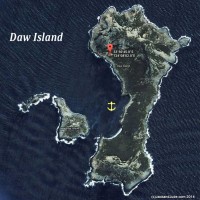
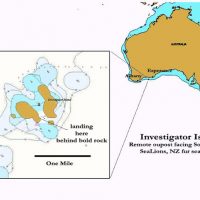 Investigator Islands
Investigator Islands

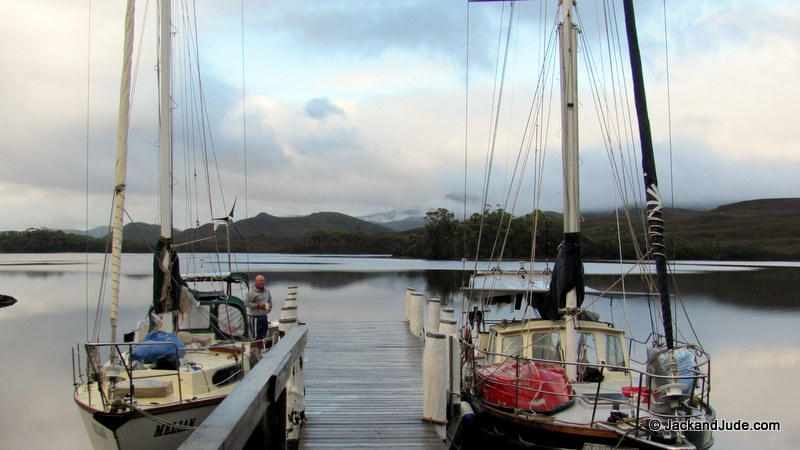
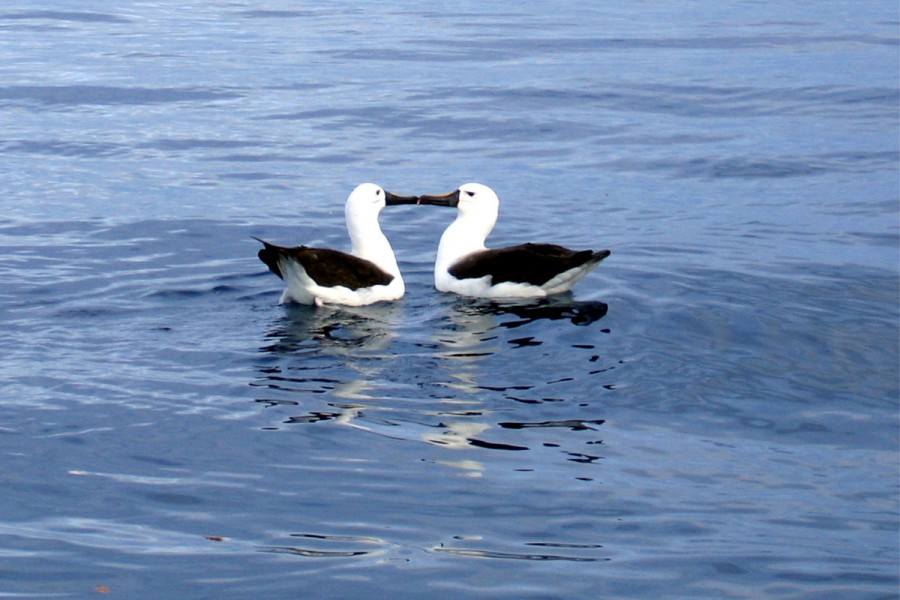
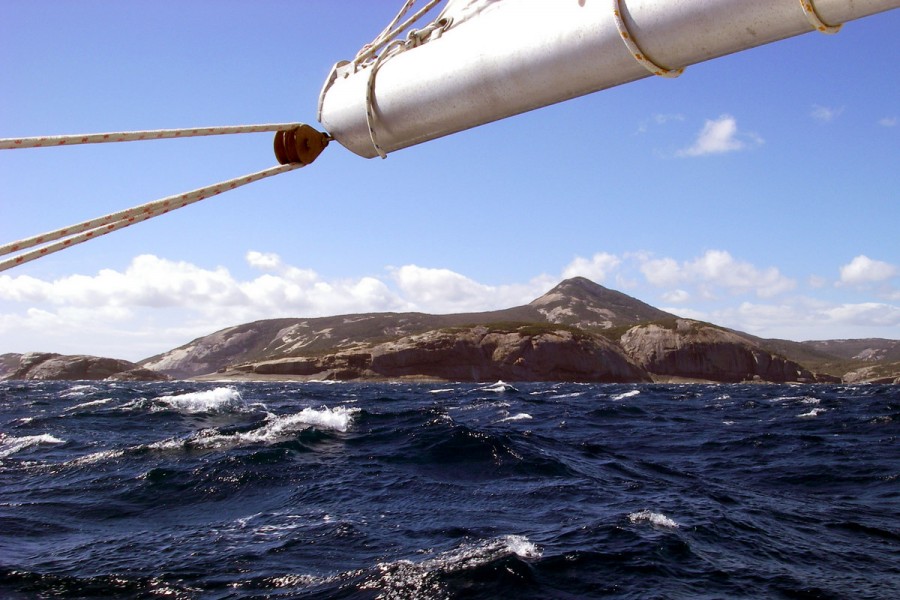
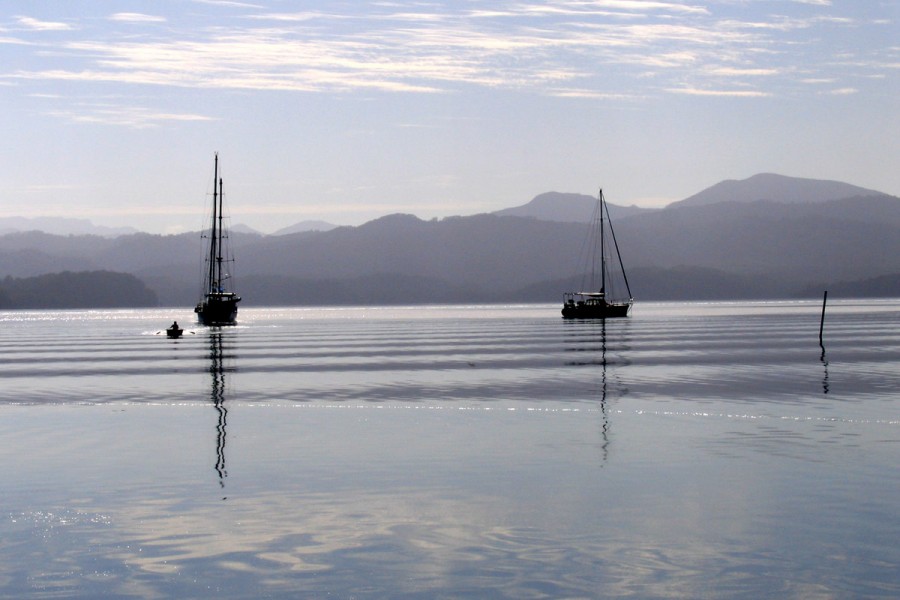
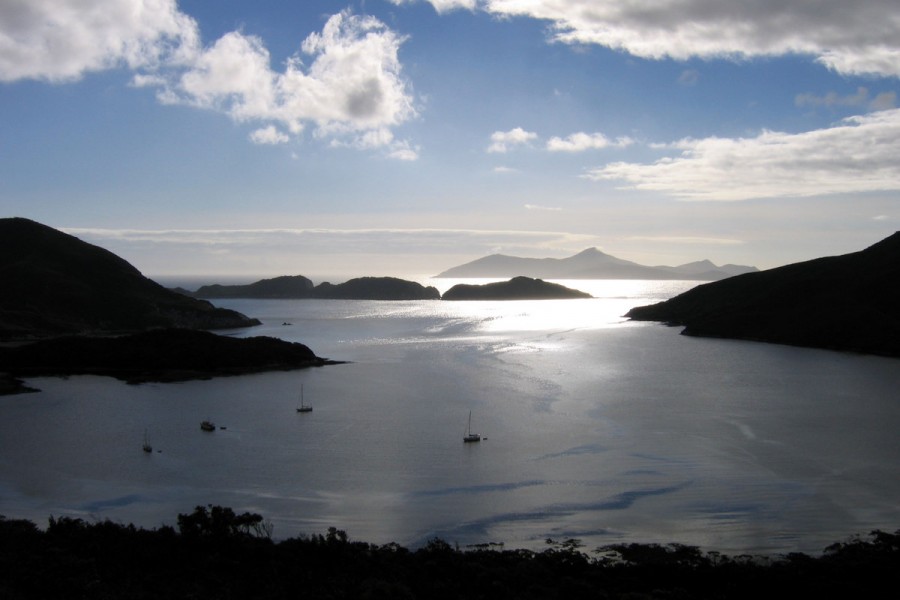
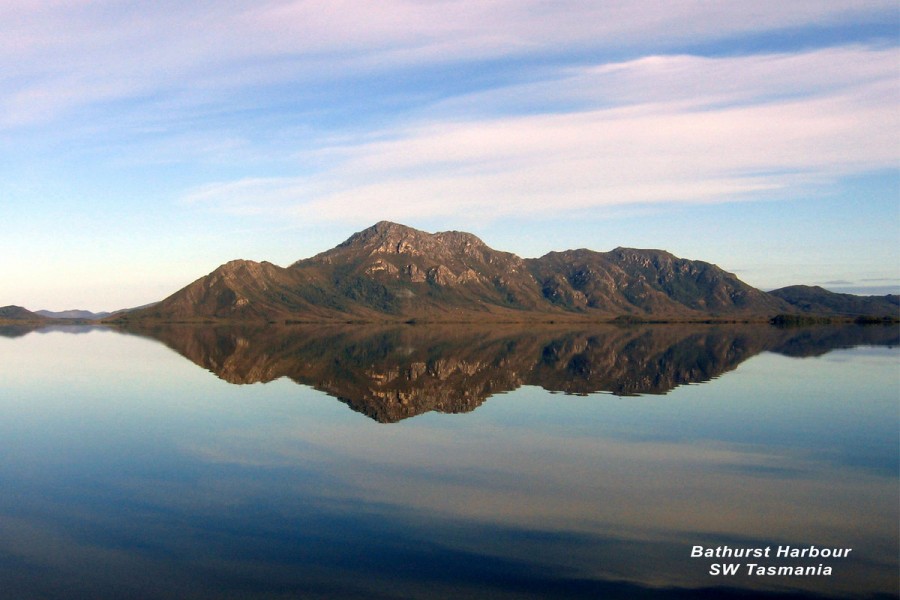
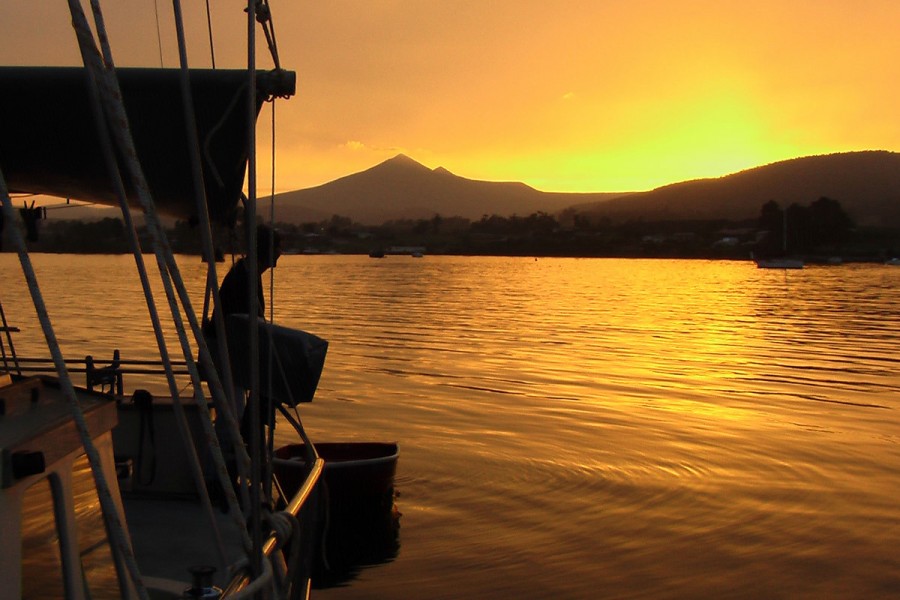
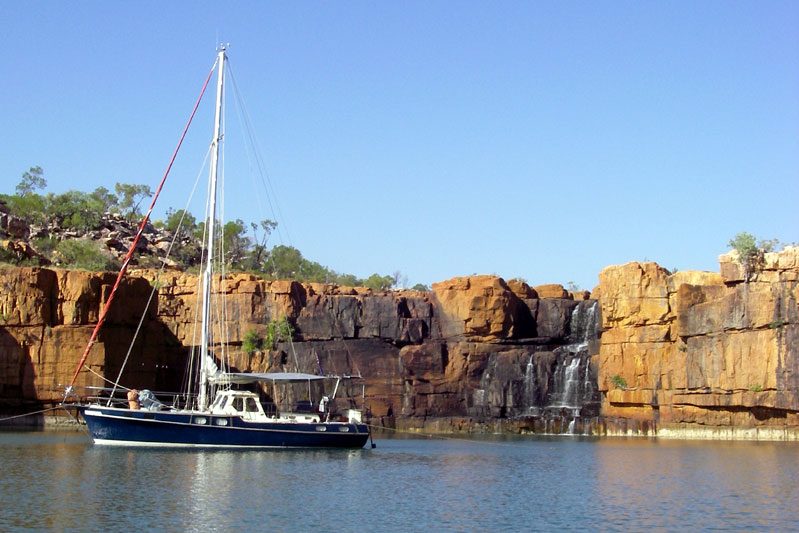
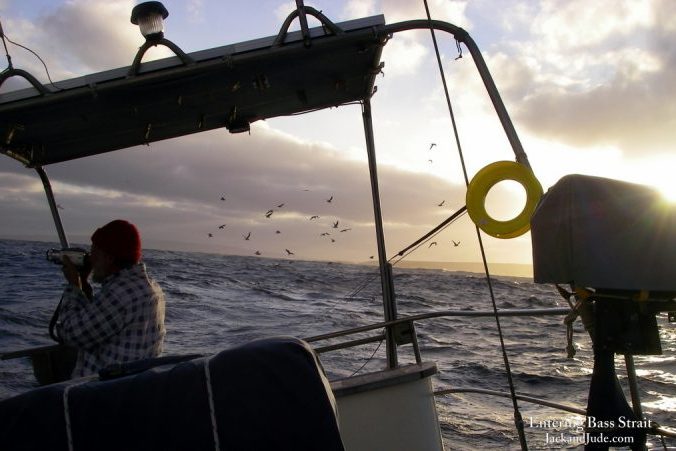





Dear Jack & Jude,
You names and great experiences in your adventure in life to date, were drawn to my attention by John Turpie who, I understand met up with you in Yamba or Ballina a couple of weeks ago.
I met John and his brother Steve when they sailed a Mottle 33 down from Brisbane in January this year to Lake Macquarie. I also have a Mark 2 High Sides Mottle 33 and, by sheer fluke, welcome them to the LMYC as we both came up to the Club’s marine where my yacht is housed.
I have no doubt you will have already ascertained what a great, very interesting ,talented fascinating character John is. Wait till you meet his wife Syv. Equally fascinating …as are Steve and his wife Libby.
[Edited for length]
It would seem that as you two and I oved in parallel lives over the decades and, if per chance we get the time to meet, there would be many adventures to catch up. Best regards ( and fair sailing ), Paul Kennedy
Hello Paul, Yes indeed, two extraordinary men, and you seem quite unique as well. If we get down to Lake Macquarie we must meet, or if you get up this way let’s get together to spin a few high seas tales. Cheers, J&J